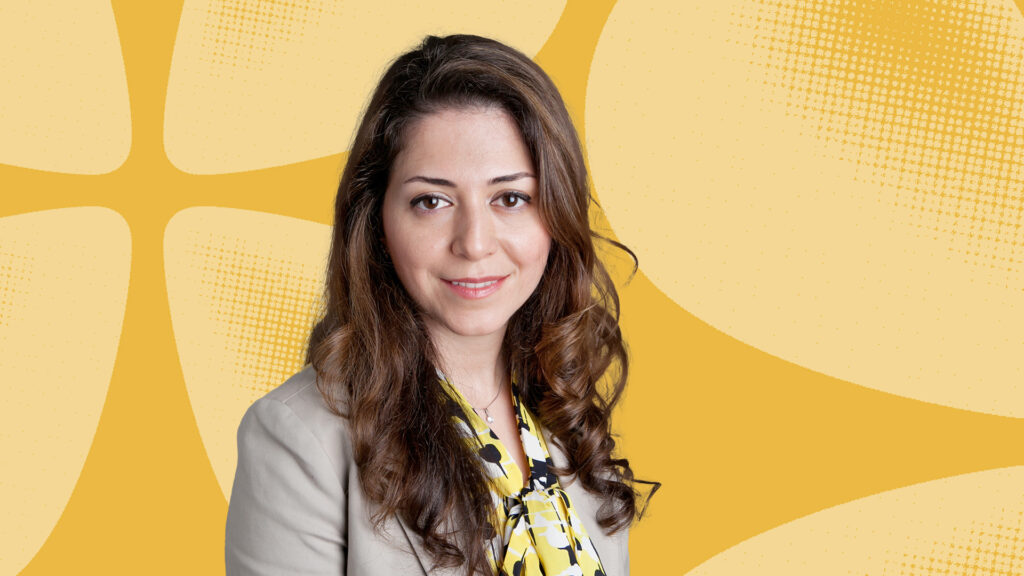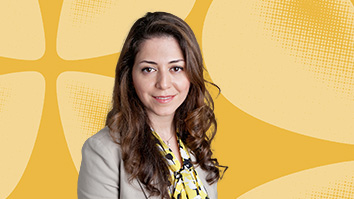
A senior research scientist at SRI pushes the frontier of how we make and take medicine.
Nazly Pirmoradi researches novel micro and nanosystems for healthcare and biomedical applications, including drug delivery, diagnostics, and sensing systems. Here, she discusses how she found her way to biomedicine, her recent work creating tablets using a 3D printer, and the joy she finds in working collaboratively.
As a child, I was curious and loved to explore all types of different things. My parents both have science and engineering degrees, so it was natural for me to hear conversations at home about how they were solving problems at work and at home.
With my bachelor’s and master’s degrees in mechanical engineering, I became interested in developing systems, devices, and materials at the micro-scale, so I joined a microelectromechanical system lab at the University of British Columbia. My PhD focused on the development of an implantable ocular drug delivery device that could be used to treat diseases such as diabetic retinopathy.
“Today, my research spans micro/nano systems and devices for biological and biomedical applications, novel materials, sensors, drug delivery, printing, and microdevices.” – Nazly Pirmoradi
I enjoy solving problems at the interface of engineering and life sciences, and seeing the potential impact on people living with eye disease was inspiring for me. During this time, I studied engineering management and was keen on learning how new technologies find their way into the real world. I went on to spend two years at UC Berkeley’s Sensor and Actuator Center, where I developed new drug delivery devices and platforms that incorporated novel microscale materials with unique tunable structural properties for efficient encapsulation and delivery to patients.
Taking on an important role in research
Ten years ago, I came across an opportunity to work with drug delivery and microsystem devices at PARC. I was surprised; I knew PARC and SRI for their legacy in discovering breakthrough technologies, but I wasn’t aware they were interested in the bio space. As I took the position in 2014, I found myself surrounded by colleagues who were curious and enthusiastic about the work I was doing.
Today my research spans micro/nano systems and devices for biological and biomedical applications, novel materials, sensors, drug delivery, printing, and microdevices. One of the projects I’ve been leading is the development of an advanced 3D printing technology to make pharmaceutical tablets. I’ve gathered a multidisciplinary team, and together we successfully demonstrated printed drug tablets with unique properties.
The traditional process of drug development is expensive and time-consuming, and many therapeutic molecules don’t make it through. Today’s industry practices are designed and optimized for high-volume production and are cost-prohibitive for low-volume production. What’s needed are advanced manufacturing systems that can provide short-run, on-demand, decentralized drug manufacturing. Our team has developed a scalable system where we can go from creating one tablet to a million per day.
Helping patients achieve positive health outcomes
This technology could be useful in a range of situations, including limited drug production to treat rare diseases, specialized dosages to suit the elderly or children, and providing alternative agile production methods for medications prone to shortage. It could also be useful in conducting efficient clinical trials, where researchers could take feedback, rework the formulation, and then print a new batch of tablets for testing. Whether this technology ends up in hospital pharmacies or enables customization in the larger manufacturing process, it has the potential to help a range of patients and ultimately contribute to the advancement of precision medicine and personalized treatment.
I love that the projects I work on are helping solve important problems that impact lives, and I especially enjoy finding solutions that benefit from a multidisciplinary approach. As part of SRI, I’m now a member of a bigger family, and excited to work with researchers from different campuses to foster collaboration that results in new ideas and approaches. This sort of teamwork is joyful for me because it involves contributing and learning at the same time.



